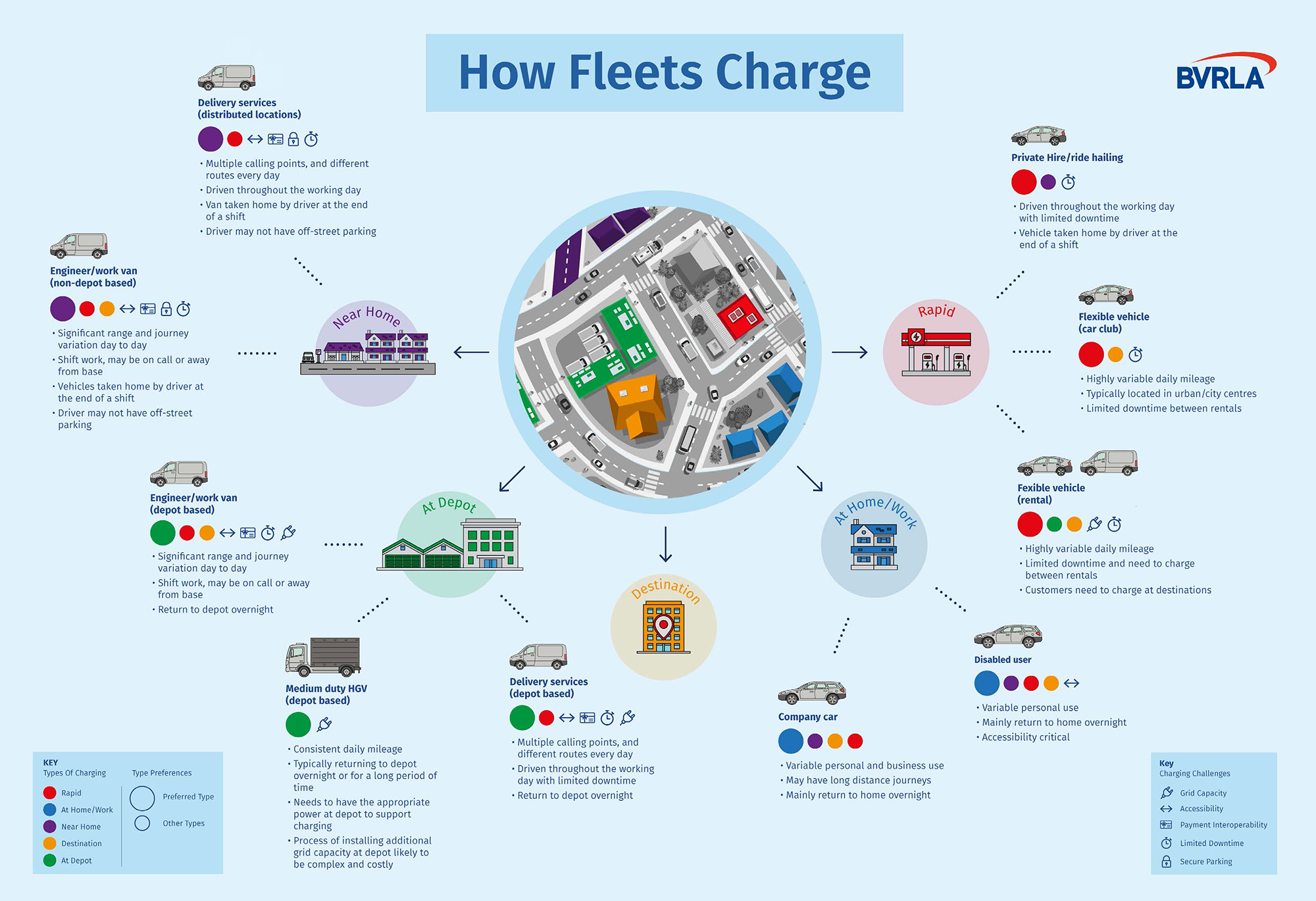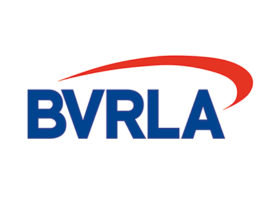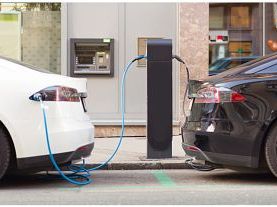The BVRLA has launched a new initiative to help local authorities as they try to meet the diverse charging needs of electric fleets. With the roll-out of charging infrastructure increasingly being devolved to local government, the association’s new ‘Fleet Charging Guide’ highlights some key fleet use cases and how they can best be supported on their zero-emission journey.
Read the Fleet Charging Guide in full
(click Fullscreen bottom right to enlarge)
Watch the preview launch of the Guide
About the BVRLA's Fleet Charging Guide
The fleet industry is the lifeblood feeding the vital organs of the UK economy and society. It is the trucks taking parts to our factories and stock to our supermarkets; the vans delivering parcels to our SMEs and plumbers to our houses; the cars delivering key workers to their place of work and holidaymakers to their destinations.
These fleets – BVRLA members and their customers - are leading the transition to zero emission road transport. They operate in every town, city and region of the UK and many of them will convert all their vehicles to electric well ahead of the 2030 phase out target for banning the sale of new diesel or petrol cars and vans.
Access to fast, affordable, reliable, accessible and secure charging infrastructure is the biggest concern that organisations and drivers face when planning for their electric future. Fleets operate a wide range of vehicles in a wide variety of ways and there is no one-size fits all charging solution.
Getting the right infrastructure in the right place at the right time will require close collaboration between everyone in the electric vehicle ecosystem, including drivers, fleet operators, charge point operators (CPOs), distribution network operators (DNOs), local authorities (LAs) and national government.
To facilitate this process, the BVRLA’s Fleet Charging Guide provides a high-level overview of how and where fleets charge and makes some recommendations on where the collaboration should focus.Recommendations for policymakers 2023
Matching types of provision to emerging gaps in infrastructure
1. LAs should consider how they include the fleet sector’s needs in their EV infrastructure strategies.
2. OZEV should provide guidance to LAs and CPOs on the practical measures needed to ensure that fleet users are catered for.
Building trust
3. OZEV should pre-emptively set out how it intends to enforce its new reliability standards.
4. OZEV should ensure open data can be used to demonstrate the accessibility of chargepoints, facilitate virtual queuing and the booking of slots.
Ensuring consistent ease of access
5. LAs should incorporate accessible charging standards into their procurement frameworks.
6. Government should create incentives for CPOs to introduce roaming solutions ahead of the regulatory deadline.
A holistic approach
7. LAs should work with DNOs, CPOs, fleets, regional transport boards and other stakeholders to promote regular engagement and sharing of data.
8. LAs should endeavour to establish a ‘whole organisation’ view of charging requirements across their region.
Overcoming grid capacity challenges
9. The Energy Networks Association (ENA) should support DNOs to adopt a standardised process and timings for all stages of grid connections and upgrades.
10. The ENA should encourage DNOs to provide a common, easily accessible, mechanism for establishing all elements of capacity at a site.
11. Where upgrades are needed, the ENA should work with DNOs to promote common forms and inputs that are accessible in advance.
12. Ofgem should review DNO Guaranteed Standards of Performance (GSoPs) to incorporate existing connections and create required response times at each stage of the grid connection process.
13. Ofgem should encourage DNOs to consider where upgrades by businesses in similar locations could be coordinated to reduce costs and delays.
14. LAs should establish a process for sharing charging infrastructure among fleet operators.
Airport infrastructure
15. DfT and other relevant stakeholders should work with airports to ensure that rental operator needs are reflected in decarbonisation plans.
16. Airports should work with rental operators to embed an appropriate process for EV charging infrastructure planning.
17. The Civil Aviation Association (CAA) should mandate that airports provide information to rental operators on power constraints at their locations and the airport’s planned grid upgrades.
18. OZEV should work with airports, DNOs, CPOs and fleets to understand their power requirements and possible support needed.
How can we help?
The Fleet Charging Guide goes hand in hand with the BVRLA’s Fleet Friendly Charging Index. The Index provides a high-level overview of how much progress local authorities (LAs) across the UK have made on their local charging infrastructure plans and how engaged they are with the fleet sector. The interactive map enables each authority to be viewed in turn, also providing contact details to help start conversations with the right people. The Fleet Charging Guide is the key to starting those conversations and sharing valuable insights for LAs to consider.
The BVRLA is on hand to support members with those conversations to bring progress at a regional level. Contact [email protected] to discuss further or to contribute to a future iteration of the Guide.

(click on image to enlarge)
Download the guide



